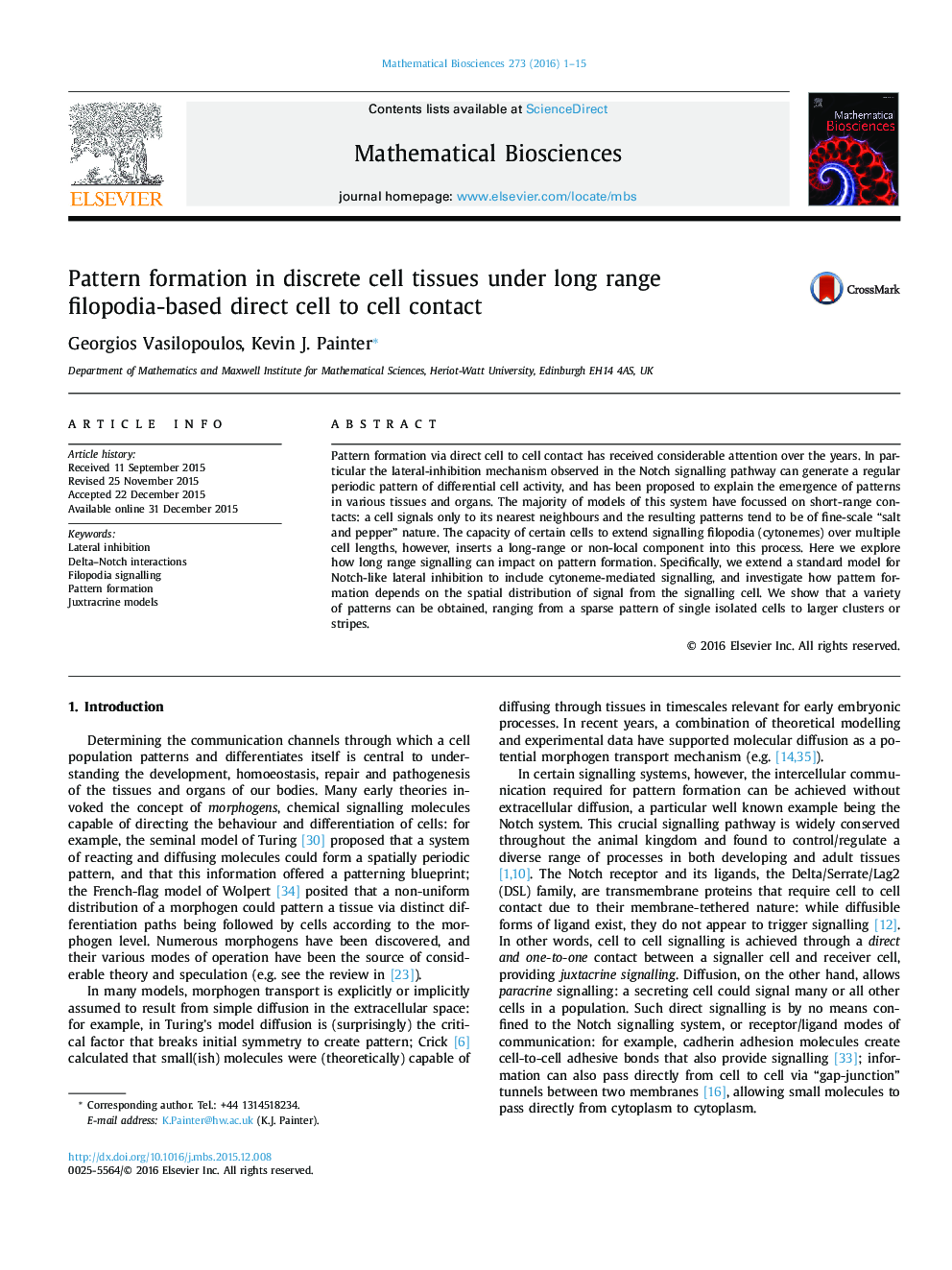| Article ID | Journal | Published Year | Pages | File Type |
|---|---|---|---|---|
| 4499920 | Mathematical Biosciences | 2016 | 15 Pages |
•We explicitly model cytoneme-mediated direct cell–cell signalling.•We apply the model to Delta–Notch mediated lateral inhibition.•We show how different forms of long-range signalling can lead to a wide variety of patterns.
Pattern formation via direct cell to cell contact has received considerable attention over the years. In particular the lateral-inhibition mechanism observed in the Notch signalling pathway can generate a regular periodic pattern of differential cell activity, and has been proposed to explain the emergence of patterns in various tissues and organs. The majority of models of this system have focussed on short-range contacts: a cell signals only to its nearest neighbours and the resulting patterns tend to be of fine-scale “salt and pepper” nature. The capacity of certain cells to extend signalling filopodia (cytonemes) over multiple cell lengths, however, inserts a long-range or non-local component into this process. Here we explore how long range signalling can impact on pattern formation. Specifically, we extend a standard model for Notch-like lateral inhibition to include cytoneme-mediated signalling, and investigate how pattern formation depends on the spatial distribution of signal from the signalling cell. We show that a variety of patterns can be obtained, ranging from a sparse pattern of single isolated cells to larger clusters or stripes.
